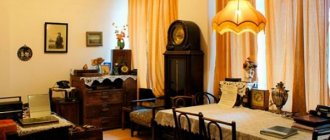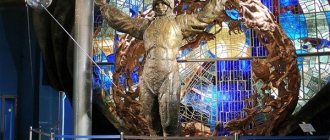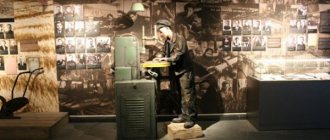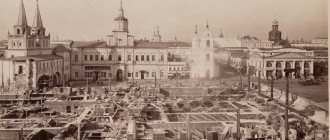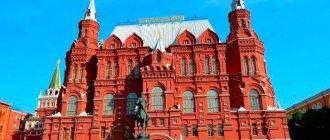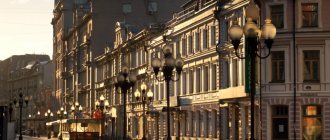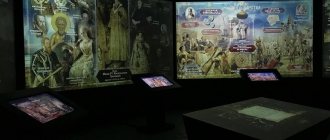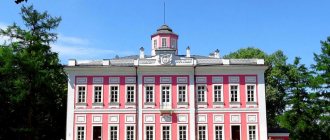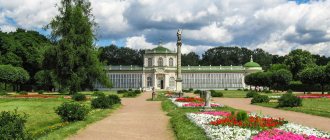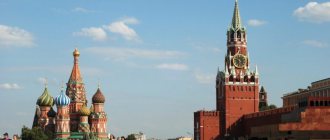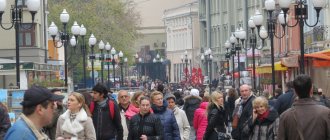In early July, the building of the Museum of Industrial Culture was demolished in the southeast of Moscow. The structure was threatened with demolition back in 2021, but then it was postponed due to public outcry, and the prefecture promised to build a new one.
Why the building was eventually demolished and what Moscow lost from this is in our material.
Demolition of the Museum of Industrial CulturePhoto: courtesy of the museum
How the museum was created
At the end of the 19th century, Nizhny Novgorod hosted a representative industrial exhibition from different parts of Russia. When it ended, the pavilion dedicated to Moscow was moved to its hometown. A museum was organized there, the exhibits of which told about all the achievements of Muscovites in the city economy.
An advanced museum at that time, it received many visitors - guests of Moscow, local historians and history-loving Muscovites. After the revolution, it was renamed the communal museum and moved to the Sukharevskaya Tower.
In the 1930s, the city experienced major reconstruction. In the capital, new squares and avenues were designed, and old buildings were subject to demolition. A sad fate awaited the Sukharevskaya Tower. The beautiful building was dismantled, and the collections were moved to a former church building in the center of the capital. In 1949, the museum received a new name - History and Reconstruction, and in the mid-1980s the name was shortened to the Museum of the History of Moscow. In everyday life it is called even more briefly - the Museum of Moscow.
Levey - well frame of the 15th century
VDNKh Museums: only with e-tickets
VDNKh pavilions and museums will also resume work on June 16. Tickets can only be purchased at vdnh.ru or on the websites of exhibition residents. To ensure maximum safety for guests, visiting museums and pavilions is permitted strictly according to the time indicated on the tickets.
Also, as part of limiting the spread of coronavirus, many VDNH residents have set limits on the number of visitors at a time.
“At the first stage, most VDNKh exhibition halls will be able to accommodate from 10 to 50 people at a time, depending on the size of the room. And, for example, with an area of more than 15 thousand square meters, it is ready to receive up to 100 visitors at a time,” Deputy Mayor of Moscow Natalya Sergunina told mos.ru.
At the same time, “Moskvarium” and the historical park “Russia – My History” did not set restrictions on the number of guests, but promised to carefully monitor social distancing.
All guests must have a mask and gloves with them, use the antiseptics installed at the entrance and exit to museums, and also not come closer than two meters to other visitors.
Photo: The City/Mikhail Goldenkov
Funds
The buildings, which the museum has occupied for about ten years, were erected in 1835 by Fyodor Mikhailovich Shestakov according to a standard design by the architect Vasily Petrovich Stasov. They served as food warehouses for several military barracks. Today the premises have been well restored and are used for permanent exhibitions and temporary exhibitions.
The museum's collections contain about 1 million exhibits, most of which are of historical and cultural value. The museum received a significant part of the rare items from Moscow residents, historians, local historians, artists and collectors. Many finds were discovered by archaeologists during excavations in the city.
The pride of the museum is about three hundred family and clan collections telling about Moscow merchant families. These are materials about the merchants Bakhrushins, Vishnyakovs, Shelaputins and Syreyshchikovs, who made a huge contribution to the development of the city.
The museum's collections contain many exhibits dedicated to the development of the mosaic genre. Colorful tiles and stained glass were used to decorate administrative buildings, churches, city hotels and metro stations. The mosaics are large in size, so they can only be seen during thematic exhibitions.
The rare book fund includes 30 thousand items. These are ancient Bibles and Gospels, the first editions of V.N. Tatishchev and M.V. Lomonosov, a textbook on arithmetic by Magnitsky, which was published at the beginning of the 18th century, and other printed rarities. The museum staff carefully preserves books with autographs of famous writers, poets, historians, composers, actors and scientists.
The building of the Moscow Historical Museum
Construction of the main museum of the history of the Russian state began in August 1875, according to the design of the architect and painter Vladimir Iosifovich Sherwood (1832 - 1897) and the military engineer Anatoly Aleksandrovich Semenov (1841 - 1917). Their project won a competition, according to the terms of which the museum building had to fit harmoniously into the architectural ensemble of Red Square. But due to the lack of sufficient funding, the project was completed only 8 years later in 1883. During the construction of the building, the latest technologies of that time were used, such as:
- brickwork on cement;
- use of metal reinforcement for floors;
- heating and plumbing;
- laying ventilation ducts;
- arrangement of drains.
The front façade of the building, accentuated by 2 spiers with double-headed eagles, reminiscent of towers on the walls of the Kremlin, faces Red Square.
The decorative decoration of the central facade is richly decorated with elements of Old Russian (Moscow) patterning, which contains:
- kokoshniks (15 types);
- caissons, recesses in walls (10 types);
- arcature friezes (belts for false arches);
- drawn cornices;
- Kyoto people
The building of the Historical Museum in Moscow is one of the most significant buildings in Russia in the 19th century.
The decoration of the remaining walls of the building attracts attention with the fortification style of design in the form of decorative hinged loopholes or machicolations located in the upper and lower parts of the side turrets, decorated with heraldic figurines of lions and unicorns.
Modern Museum
Traveling through the museum halls is like a real adventure, because they display many unusual exhibits. Visitors spend a long time looking at the unique collection of themed scarves produced before the revolution and during the years of Soviet power. Each of them is dedicated to an important event in the history of the city and country - the 800th anniversary of Moscow, the 1950 Peace Congress and the 80th Olympics.
The rich collection of porcelain and glass looks very picturesque. Painted ceramics and the finest objects were made at famous Russian factories owned by Yu. S. Nechaev-Maltsev, the Kornilov brothers, A. S. Popov and the partnership of M. S. Kuznetsov. Of no less interest is the large collection of elegant figurines telling about the lives of ordinary townspeople and peasants, which were made at the factory of Franz Yakovlevich Gardner.
The USSR produced many goods associated with Moscow. The name of the capital was given to perfumes, cosmetics and even household appliances. In the halls you can see rare objects with Moscow symbols.
Architecture connoisseurs will be interested in the carefully executed paintings and drawings created by the Russian artist Appolinary Mikhailovich Vasnetsov. Thanks to him, we can find out what ancient towers and mansions that have not survived to this day looked like. It is curious that on the reverse side of his works the talented author left detailed notes and talked about the topographical and local history features of famous architectural monuments.
The halls of the museum display antique furniture, rare photographs of the city and its inhabitants, graphics, sculptures and paintings. Tourists linger for a long time near old passenger cars, which at different times were produced at Moscow automobile factories. These are not only the familiar Muscovites, but also foreign cars - Ford and Studebaker, manufactured at the beginning of the last century.
A separate section is devoted to Moscow diagrams and maps. The oldest exhibit can amaze even the most sophisticated connoisseurs of Moscow history. This is Sigismund's plan, made in 1610.
It depicts the central part of the city within the modern Garden Ring. The Latin text on the map says that Moscow is the capital of White Russia and one of the largest cities in Europe.
The Faleristics section displays orders, medals and badges from different eras. One of the rare exhibits is a militia cross, which was awarded to those who distinguished themselves in the War of 1812.
Many awards are associated with the famous battles for Moscow.
Exposition
The collection that the Moscow History Museum boasts includes more than 1 million storage units, including a variety of documents, furniture, costume elements, examples of fine and applied art, photographs, maps, coins, dishes, archaeological finds, etc. Here you can see paintings by Aivazovsky, Polenov, Vasnetsov, Makovsky, Surikov, Falk and other famous artists. You can also compare modern Moscow with how it developed and expanded; a rich collection of photographs, maps and plans of the city will help with this. There is even a lunch menu in honor of the coronation of the last imperial couple. Where else can you see this?
Tourist information
The museum's doors are open Tuesday, Wednesday and Friday to Sunday from 10:00 to 20:00, and on Thursday from 11:00 to 21:00. The collections are housed in three buildings of the former Provision Warehouses. The first building is occupied by four exhibition halls.
There are also cash registers here. A ticket for an adult to one exhibition costs 200 rubles, a discounted ticket costs 100 rubles. A full ticket will cost 450 rubles, and a reduced ticket will cost 225 rubles. Admission for preschoolers is free. Discounted tickets are sold to children 7-17 years old, large families with children, students, disabled people and pensioners (2018).
The second building of the museum is currently being restored and is closed to tourists. The third building houses the information desk, the Children's Center and the gift shop. Here they sell paintings and colorful photo albums with views of the city, books about history, memoirs of famous residents and a board game on the history of the capital. On the second floor of the building there is a permanent exhibition on the history of Moscow, a Documentary Film Center, a lecture hall and the Proviant cafe.
Ford-T Phaeton (1914)
The spacious museum courtyard is used for public celebrations, concerts, festivals, as well as open-air documentary film screenings. A separate building is occupied by an excursion center and a coffee shop.
According to the new rules
According to the mayor of Moscow, over the week that has passed since the previous stage of lifting restrictions, the capital continues to record a drop in the number of coronavirus cases. This allows us to safely move to a new stage on June 16: zoos, libraries, summer terraces of cafes, dental clinics and offices, real estate offices, rental services, advertising, consulting and other institutions will be able to open their doors to visitors.
When making decisions to lift restrictions, we each time compare them with the epidemiological situation that is developing in the city. It is important that it remains manageable and allows you to take the next steps. We have to solve a problem with many unknowns, there is always a risk of making a mistake. And this is a huge responsibility to the citizens. Sergei Sobyanin
mayor of Moscow
The main cultural news is that museums will also be able to resume work. For now, in a special order approved by Rospotrebnadzor.
First of all, the department's order specifies standard rules for working in the new conditions: constant ventilation of premises (if possible), daily wet cleaning and treatment of rooms with special solutions, allowing only healthy employees to work, limiting communications between departments and wearing masks.
Photo: Moscow 24/Anton Velikzhanin
However, there are a number of specific rules specifically for museums:
- museums should organize contactless ticket checking - it is advisable to organize a visit with pre-purchased tickets at a certain time;
- Group excursions can be carried out with no more than five people. In addition, it is necessary to organize a distance of 1.5–2 meters between groups and other museum visitors, as well as employees;
- reception of large tourist and excursion groups is not yet allowed;
- Markings are required to ensure social distancing is maintained by museum visitors;
- It will also be necessary to organize separate entrances and exits from the exhibition premises with signs in order to avoid counter flows of visitors;
- If possible, museums should ensure the sale of medical masks at the entrance to buildings, preferably in a contactless manner.
By the way, not all museums will begin their work on the 16th.
Some organizations were not yet ready to receive guests, Yevgeny Gerasimov, chairman of the Moscow City Duma Commission on Culture and Mass Communications, told Moscow 24. He also explained what visiting museums would look like at first. Everything is gradual. Let's start with an individual visit, then move on to a more mass one based on the degree of readiness. Guides will not appear everywhere right away. In many museums, they will now be replaced by modern electronic media – audio guides. We have already established this system in different languages. Evgeniy Gerasimov
Chairman of the Moscow City Duma Commission on Culture and Mass Communications
Among the first to open in the capital are the Garage Museum of Contemporary Art, the Museum of Moscow, the Museum of the History of the T-34 Tank, and museums at VDNKh. At the same time, the opening of the Tretyakov Gallery, for example, is scheduled for July 3. “We have started renovations at all sites. Now we are in the midst of work. Also on Thursday, Rospotrebnadzor requirements were issued - we will need to adjust the operating hours and establish a safe visit,” the organization’s press service told Moscow 24.
Excursions
In order for residents and guests of the city to get to know the capital better, the museum offers educational excursions. They are held all year round. Tourists are shown the most interesting stations of the Moscow metro, told about the architecture of buildings on the square of three stations and the legendary high-rise building - the House on the Embankment.
ZIS 110 (1948)
Those interested can go on excursions dedicated to the history of the Sandunov and Khludov baths, the cultural heritage of Fyodor Shekhtel and the medieval city. Popular among visitors are trips to the Petrovsky Travel Palace and the artists’ village “Falcon”.
Educational programs
The museum organizes special excursions, interactive classes, quests and intellectual games “Museum Investigation” for children. There is a Children's Center in one of the buildings. It has sculpting and dancing groups, calligraphy courses and a children's film school. Every Sunday, the best chamber theaters of the city hold theatrical performances based on Russian history and folk tales in the museum.
Studebaker-Garford. Model 25 (1906)
